
The tack certainly doesn't win the prize for the most popular windsurfing manoeuvre, on the contrary. The fact that this upwind move is treated so neglected is understandable at first glance: It doesn't look as sexy as a power jibe, not to mention the possibility of gliding through. And on top of that, a clean tack in choppy conditions and on small boards is not an easy manoeuvre.
Nevertheless, the tack should be part of the repertoire of all windsurfers, because with every turn you make up a few metres to windward instead of losing 20 metres of height as when jibing. At spots with a current or when the tack is not yet one hundred per cent correct, this often saves you having to run upwind on the beach.
You can only learn to tack if you go out on the water and practise in light winds.
Compared to the power jibe, the tack has another important advantage: it's great for practising in light winds! The great thing about it is that the tack is probably the only manoeuvre that you can keep 1:1 for the rest of your surfing life. What you learn in the first advanced course at the beginning of your windsurfing career is therefore very similar to what Köster & Co. learn in the World Cup.
Basic technique: The basic tack
The best way to practise the basic turn is on a longboard or WindSUP, but boards without a daggerboard that offer a little excess volume are also suitable.
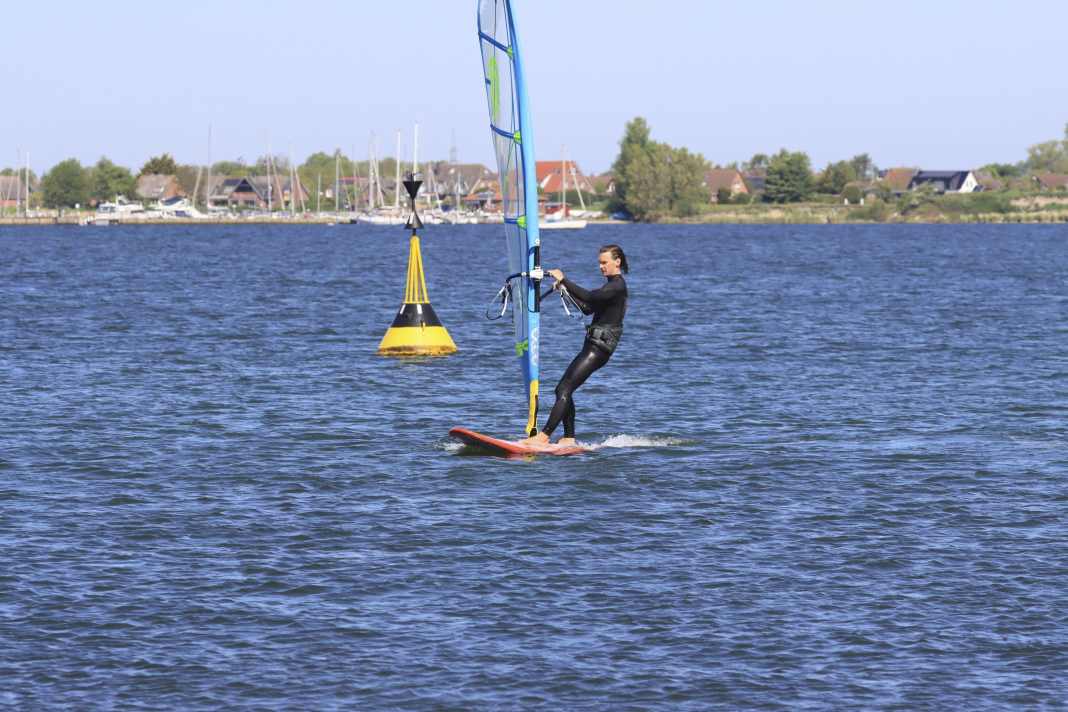





The tack on the shortboard
The smaller the board, the more challenging the tack. However, if you have mastered the basic variation (see previous double page), you can also learn the tack on a tiny board. However, you will need to adapt your technique and timing a little - we'll show you what's important here.
Timing and parts of the technique are different in a planing tack than in light wind.
Anyone who has ever ridden a small funboard knows that such boards are very tippy in the doldrums and, depending on their volume, can sometimes sink in certain situations. The basic technique of "luffing into the wind, then changing the side of the sail" often doesn't get you very far.
With planing winds, the aim is instead to change sides at a moment when the board is still planing - simply because it still offers enough lift when planing and is also more stable.
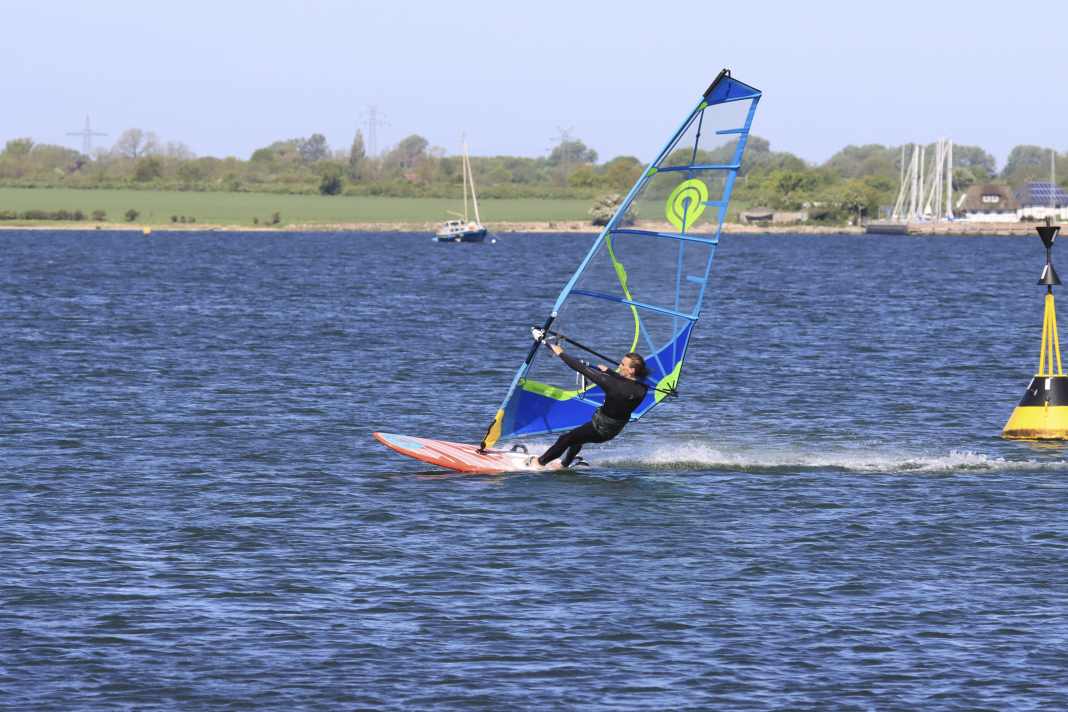





Crucial point: changing sides
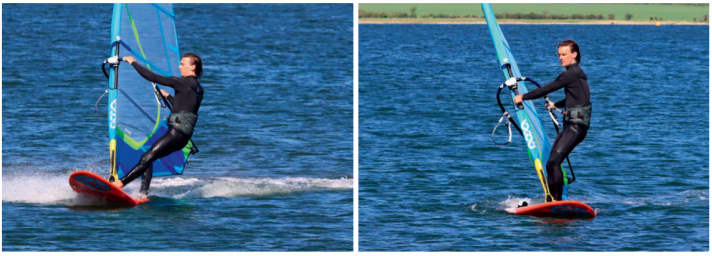
The two pictures show the moment immediately before the side change. With the planing tack (left), this happens before the board is directly upwind and still has residual speed. In light winds, the board is even steered slightly through the wind by pulling the sail over, only then does the side change take place. Whether you use the mast technique (right) or boom-to-boom to reach the new side is of secondary importance.
Typical mistakes: The three best tips for tacking on small boards
The shin trick
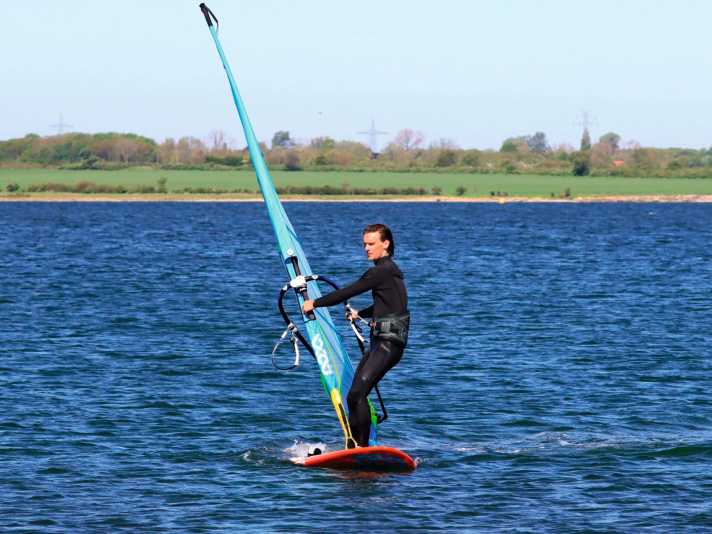
Do you sometimes have the problem that the wind unintentionally hits your sail from the front after changing feet while dropping out of the wind? This is usually due to incorrect timing and ultimately because your board has not yet turned far enough through the wind before the side change and the final drop. But how do you know when the right moment has come to change sides? The shin trick helps: new Immediately before changing sides, the sail should be pulled over the tail. If the lower leech touches your rear shin, this is the start signal for the side change.
Mast to the rear creates space
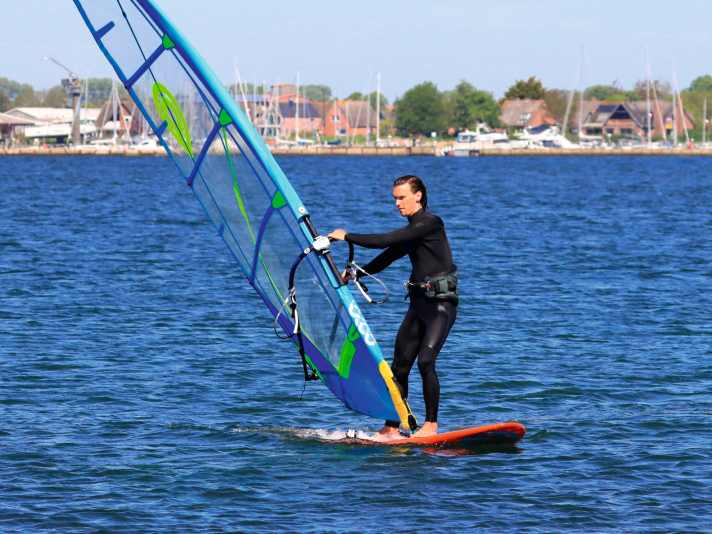
The most critical moment is the change of tack around the front of the mast, regardless of whether it is a base tack or a planing tack. You often send the bow diving or fall backwards with the sail towards the bow. Hence the tip: If your sail is tilted far back, you have room and don't have to shift your weight towards the bow to change sides. Only after one foot has been set backwards again does the rig come forwards for the final drop
Two steps - and no more!

With lots of small tapping steps around the mast, this might work on a longboard, but hardly on a funboard. During the initiation, you take the front foot in front of the mast and steer into the wind, regardless of whether you are doing a base turn or a planing turn. The side change then always takes place in just two steps: a quick step heel to heel in front of the mast and then immediately back to the centre of the board.
Further driving technique tips:

